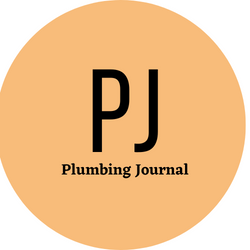What are the Emergency Steps Homeowners Should Take Before the Plumber Arrives?

When a plumbing emergency strikes, knowing the right steps to take before a professional arrives can save you time, money, and stress. Acting quickly can prevent extensive damage to your home and reduce repair costs. This guide provides essential steps homeowners should follow when facing a plumbing emergency, including when to consider calling a water restoration service.
The Impact of Water Damage
Water damage is a serious issue for homeowners, often resulting in significant repair costs and potential health hazards if not addressed promptly. According to the Insurance Information Institute, water damage is the second most common insurance claim in the United States, with an average cost of $10,234 per claim. Homeowners can avoid such high costs by understanding emergency steps and knowing when to call in professionals.
Shut Off the Water Supply
The first and most critical step in any plumbing emergency is to shut off the water supply. This action prevents further water damage and helps contain the problem.
Locating the Main Water Shutoff Valve
-
Identify the valve: Typically found in the basement, crawl space, or near the water meter.
-
Turn it off: Rotate the valve clockwise until it stops. For gate valves, use a wrench for better grip.
Costs of Water Damage Repair
-
Minor Leaks: Repairing minor leaks and water damage can cost between $100 and $500.
-
Significant Damage: More extensive damage, such as waterlogged floors or walls, can range from $1,000 to $3,500.
-
Major Water Damage: Severe cases involving structural damage or mold remediation can exceed $5,000.
Turn Off Electrical Appliances
Water and electricity are a dangerous combination. Protect your home by turning off electrical appliances and the main breaker if necessary.
Safety First
-
Unplug appliances: Focus on those in the affected area to prevent electrical hazards.
-
Main breaker: If water is near electrical outlets, turn off the main breaker to avoid the risk of electric shock.
Drain Excess Water
Removing standing water helps prevent further damage to your home’s structure and minimizes mold growth.
Use Appropriate Tools
-
Wet/Dry Vacuum: Ideal for removing large amounts of water quickly.
-
Buckets and Mops: Useful for smaller spills and hard-to-reach areas.
Costs of Mold Remediation
-
Minor Mold Issues: Remediation can cost between $500 and $1,500.
-
Extensive Mold Growth: Severe cases can require professional mold remediation services, ranging from $2,000 to $6,000 or more.
Address Minor Leaks
While waiting for the plumber, addressing minor leaks can help mitigate damage.
Temporary Fixes
-
Plumber’s Tape: Wrap it around small leaks in pipes.
-
Buckets: Place them under leaks to catch dripping water.
Communicate with the Plumber
Providing detailed information to your plumber ensures they come prepared with the necessary tools and parts.
Key Information to Share
-
Nature of the Emergency: Describe the issue clearly.
-
Location: Provide the exact location of the problem.
-
Previous Attempts: Mention any steps you've already taken to address the issue.
Call a Water Restoration Service
In certain situations, a water restoration service is necessary to address the extent of the damage effectively.
When to Call a Water Restoration Service
-
Extensive Water Damage: If water damage is widespread, a water restoration service may be necessary to properly dry and repair affected areas.
-
Health Concerns: Situations involving sewage backup or mold growth require specialized cleaning to ensure safety and health.
-
Persistent Issues: If water damage persists despite initial efforts, professional restoration ensures comprehensive treatment.
Cost Analysis for Water Damage Restoration
Understanding the potential costs associated with water damage repair can help you make informed decisions.
-
Water Extraction: Removing standing water can cost between $75 and $200 per hour.
-
Drying and Dehumidification: Using industrial fans and dehumidifiers to dry the area can range from $500 to $1,500.
-
Restoration and Repairs: Replacing damaged materials and restoring the area can cost from $1,000 to $4,000, depending on the extent of the damage.
Quick Statistics on Water Damage
Water damage statistics highlight the importance of quick action:
-
Water Damage Claims: 14,000 people in the U.S. experience a water damage emergency at home or work each day.
-
Costs of Delay: Untreated water leaks can lead to damage costing up to $70,000, including structural repairs and mold remediation.
-
Insurance Claims: Water damage accounts for 29% of all homeowner insurance claims, emphasizing its prevalence and potential financial impact.
Taking these emergency steps can significantly reduce the impact of a plumbing issue before professional help arrives. By acting quickly and efficiently, you protect your home and ensure a smoother repair process. Understanding the costs associated with water damage repair and knowing when to call a water restoration service can help you manage the situation more effectively and minimize financial and structural damage. Proactive measures and informed decisions are key to maintaining a safe and secure home environment.
When a plumbing emergency strikes, knowing the right steps to take before a professional arrives can save you time, money, and stress. Acting quickly can prevent extensive damage to your home and reduce repair costs. This guide provides essential steps homeowners should follow when facing a plumbing emergency, including when to consider calling a water…
Recent Posts
- What are the Emergency Steps Homeowners Should Take Before the Plumber Arrives?
- Benefits of Using Portable Toilets for Outdoor Events in Rosenburg
- Keeping Your Water Hot: Essential Water Heater Maintenance Tips in Albuquerque
- The Longevity Factor: Extending the Lifespan of Your AC System through Proper Maintenance in Houston
- Expert Heating, Cooling, And Plumbing Services At Hubbard Mechanical
